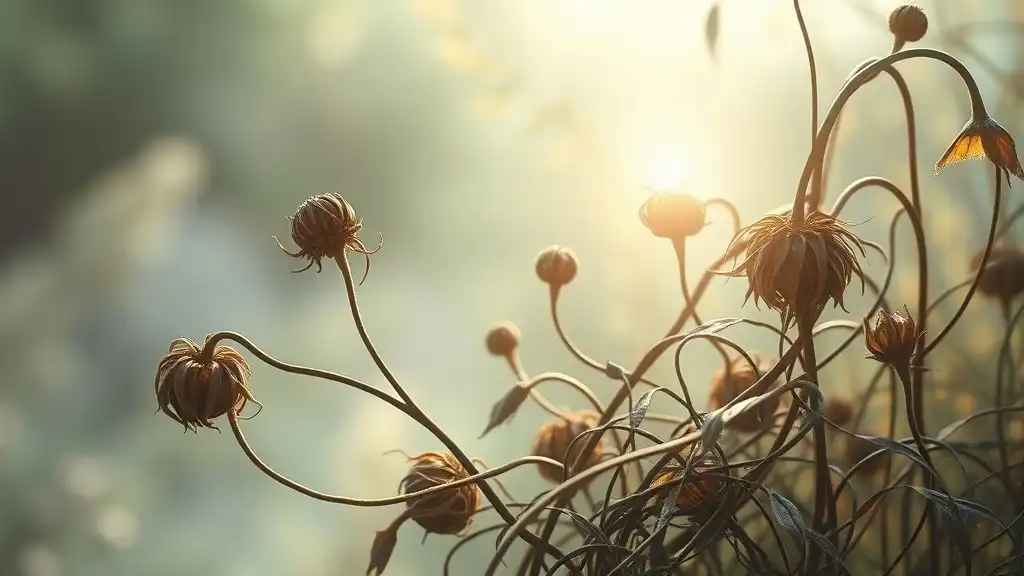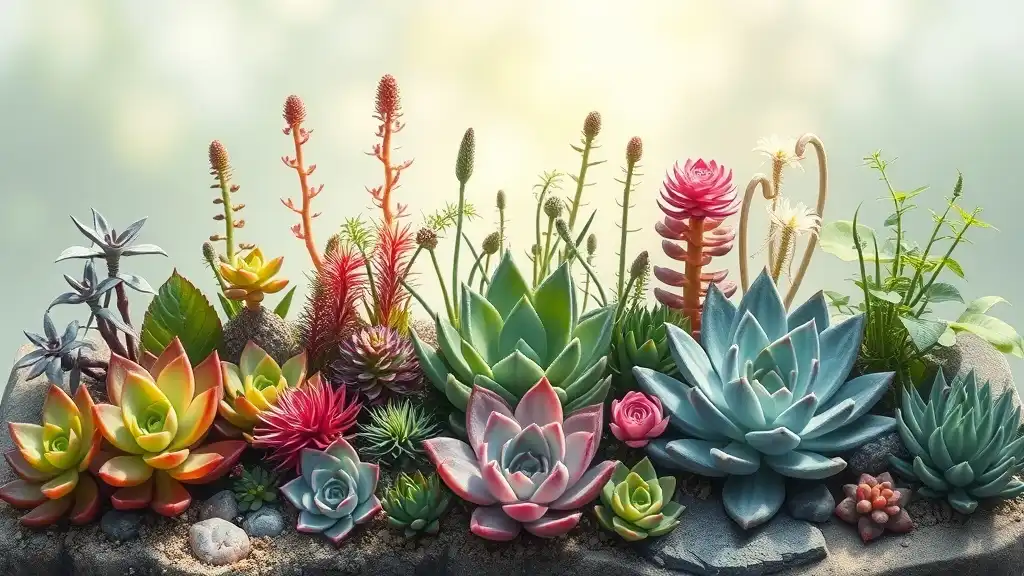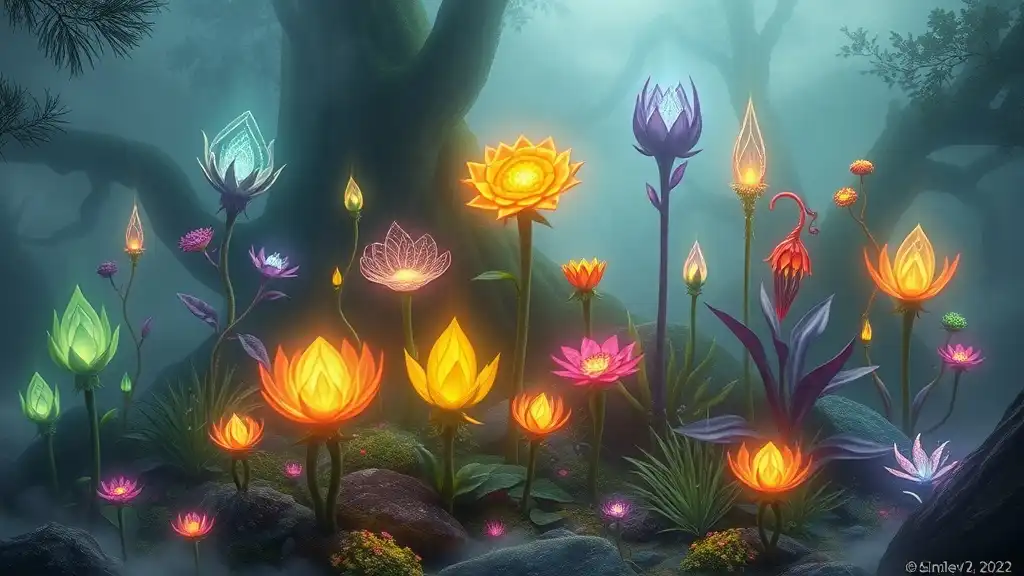Plants have long played a crucial role in the cultural and spiritual tapestry of humanity. From ancient rituals to modern eco-spiritual practices, the connection between plants and spirituality is profound and multifaceted. This relationship highlights the energy and symbolism inherent in each species, inviting us to deepen our understanding of the natural world and our place within it.
The Connection Between Plants and Spirituality
Historical Perspectives
Throughout history, plants have been imbued with rich spiritual significance across various cultures. Ancient civilizations revered specific plants for their healing properties and symbolic meanings. For instance, the Egyptians worshipped lotus flowers, believing they represented purity and rebirth. The indigenous peoples of the Americas have long utilized sage in rituals for cleansing and protection. These historical perspectives show us that humanity has always recognized the intrinsic spirituality of plants.
As we explore this connection, it’s essential to note that many religious practices incorporate plants as symbols of divine presence. For example, in Christianity, the olive branch is a symbol of peace and hope, often associated with the Holy Spirit. Understanding this historical context not only enriches our spiritual journeys but also underscores the significance of plants in our collective consciousness.
The Modern Spiritual Awakening
In recent years, there has been a resurgence of interest in plant spirituality, spurred by movements such as eco-spirituality and herbalism. More people are turning to nature, seeking solace and guidance from the wisdom of plants. This modern spiritual awakening encourages individuals to reconnect with the Earth and recognize the energy that plants exude.
The growing popularity of practices like gardening for the soul and plant-based rituals speaks to this movement. As we navigate a world increasingly detached from nature, many are reclaiming their bond with the plant kingdom, rediscovering the peace and enlightenment that comes from nurturing the Earth.

Common Plants and Their Spiritual Meanings
Trees
Oak
The oak tree stands as a symbol of strength and endurance in various spiritual traditions. Revered in Celtic practices, the oak is often associated with wisdom and protection. To connect with this energy, one might spend time meditating under an oak tree, inviting its powerful presence to guide inner strength and resilience.
Willow
Conversely, the willow tree embodies flexibility and adaptability. Its ability to bend without breaking is an apt metaphor for navigating life’s challenges. In many cultures, the willow is seen as a bridge between the physical and spiritual realms, making it an excellent ally for intuition and emotional healing. Engaging with a willow tree can foster insights into our capacity for change and growth.
Flowers
Lavender
Lavender, with its calming scent, symbolizes tranquility and peace. Its spiritual significance dates back to ancient times, where it was used in rituals of purification and protection. Incorporating lavender into your spiritual practice—be it through essential oils, dried flowers, or herbal tea—can help create an atmosphere of serenity, aiding in meditation and contemplation.
Rose
The rose holds a powerful representation of love and compassion across many cultures. Each color of the rose carries its unique energy; for instance, red roses symbolize romantic love, while white roses represent purity. In spiritual practices, incorporating roses into rituals can enhance manifestations of love, encourage forgiveness, and foster compassion both for oneself and others.
Herbs
Sage
Sage is traditionally used for its cleansing and protective properties. Many practices, including Native American smudging ceremonies, utilize sage to clear negative energy. Burning sage can create a sacred space, allowing for higher vibrations and spiritual connection, while promoting healing and clarity in our lives.
Basil
Basil is more than just a culinary herb; it signifies prosperity and good fortune in many spiritual circles. Often kept in homes or used in rituals, basil serves as a reminder to cultivate abundance and gratitude. Incorporating basil into daily practices—be it through cooking or visualization—can invite positive energy and growth.
Succulents and Cacti
Aloe Vera
Aloe vera is known as a healing plant, both physically and spiritually. Often associated with rejuvenation and nurturing, aloe is a reminder to care for oneself. Incorporating aloe into your self-care rituals can reinforce messages of healing, urging one to prioritize both mental and physical health.
Prickly Pear
The prickly pear cactus embodies the themes of resilience and survival. Thriving in harsh conditions, this plant teaches us the importance of adaptation and perseverance. Meditating on the qualities of the prickly pear can foster lessons in embracing challenges, transforming adversity into strength.

How to Connect Spiritually with Plants
Creating a Sacred Space
To cultivate a deeper connection with plants, consider establishing a sacred space in your home or garden. This area should be inviting, where you feel comfortable engaging with plants. Decorate it with items that resonate with you—photos, crystals, or even your favorite plants. The key here is intention. As you set up your space, visualize it as a sanctuary where the energy of plants will aid you on your spiritual journey.
Meditation and Plant Connection
Meditation is an excellent way to deepen your connection with plants. Focus on a specific plant, either in your sacred space or outdoors, and absorb its energy. You may choose to engage in guided visualizations where you imagine roots connecting you to the plant, drawing in its healing energy. This practice enhances mindfulness and cultivates a rich, spiritual relationship with nature.
Incorporating Plants into Rituals
Simple rituals using plants can enrich your spiritual practice. For instance, consider creating a seasonal plant-based ritual that aligns with the cycles of nature. This could involve planting herbs in spring, harvesting in summer, or making herbal remedies in fall. Each season presents a unique opportunity to honor the plant's energy while reflecting on personal growth and transformation.

The Healing Power of Plants
Physical Healing
Plants possess remarkable healing properties that have been acknowledged for centuries. Many herbs and other plant-based substances serve as home remedies, promoting physical health. Their spiritual implications suggest that physical healing is often intertwined with emotional and spiritual well-being, reinforcing the notion that healing occurs on multiple levels.
Emotional and Spiritual Healing
The connection between plants and emotional healing is potent. Engaging with plants can bring clarity, soothe anxiety, and promote inner peace. The simple act of caring for a plant can serve as a powerful form of therapy, providing comfort and cultivating emotional resilience. By immersing ourselves in the energy of plants, we tap into a source of wisdom, inviting healing not just for ourselves, but for the wider world around us.

Conclusion
Embracing the spiritual meanings of plants allows us to connect more profoundly with our environment and ourselves. Each plant offers unique energies, wisdom, and opportunities for growth, urging us to reflect on our place in the intricate web of life. As we navigate our spiritual paths, may we open our hearts to the lessons of the plant kingdom, fostering a deeper, meaningful connection with the Earth. Exploring the spiritual meanings of plants can lead us to greater awareness, love, and harmony within ourselves and the world around us.

Additional Resources
For further exploration of the spiritual meanings of plants, consider delving into books and online resources focused on herbalism, eco-spirituality, and plant symbolism. Seek out local workshops or courses that encourage hands-on experiences and guided practices in plant spirituality to enhance your understanding and connection with the natural world.



















